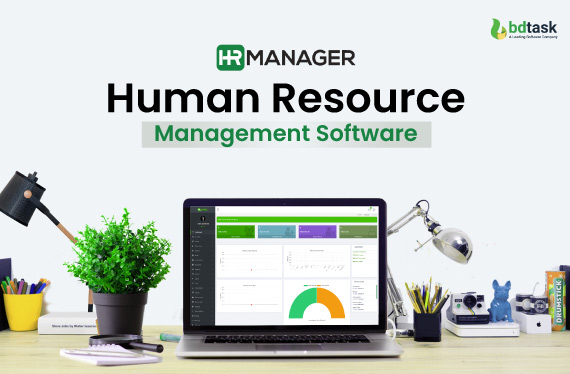Employee Benefits in HRM: Policy Beyond Paycheck For Employees
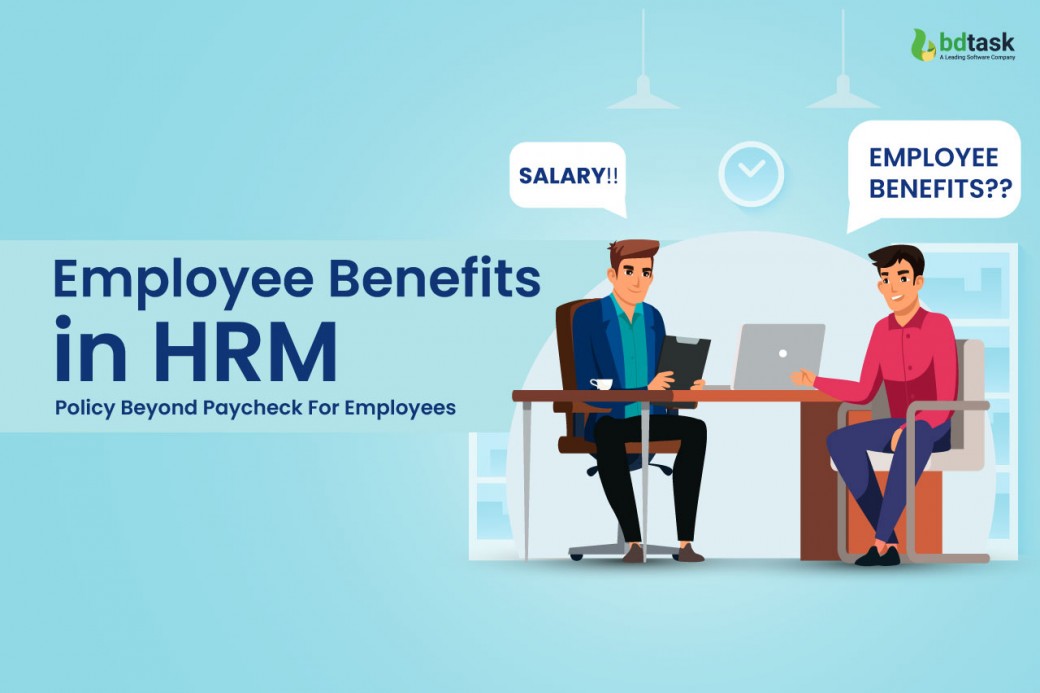
Human resources of an organisation are equally important as office premises. I think every organisation must treat employees like valuable assets of an organisation. And to do that, the organisation must introduce employee benefits in HRM policy, which will be favourable specially for employees.
Every job-holder invests their valuable 9 to 10 hours in exchange for an agreeable remuneration every month. Employees do the same old monotonous tasks daily, resulting in boredom for almost every employee.
And the best part is that companies are also well aware of it; hence to boost employees' energy and efficiency, many organisations use this "employee benefit" strategy to provide different types of motivation and enthusiasm to perform harder.
Any types of benefit or bonus to the employees indirectly speed up the productivity and also the loyalty towards the organisation.
In this blog, I'm going to open up some of the very beneficial employee benefits in HRM rules and how employees are getting benefited from these types of employee benefits provided by the organisation.
What Is Employee Benefit?- Clear Definition
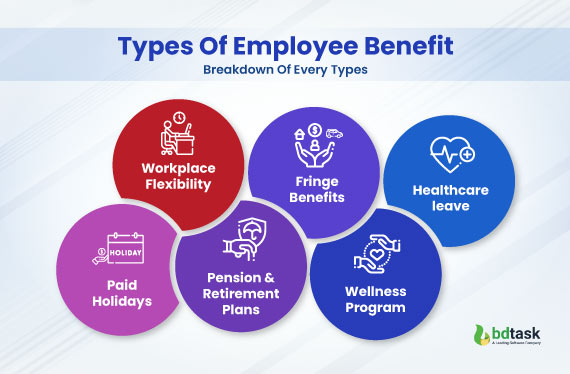
First Thing First!! Let Me Clear Up The Basic Confusion!!
“Employee benefit is not salary”, which an employee used to get every month….
Employee benefits are one kind of beneficiary financial and non-financial amount. An extra advantage from an organisation which is totally separate from the salary amount.
One thing which most people subconsciously ignore is the format of job- circular, where you see a chronology of:
- Brief Description About The Organization
- Position /Job Context
- Educational Requirement
- Job Responsibility
- Qualification Required
- Experience
- Salary
- Others Benefit
The “others benefit” is the section of the job circular which holds the lists of employee benefits in HRM policies book which will be provided to every employee after the job confirmation. This part is usually provided to motivate or to attract potential candidates to apply for the specific position. The benefits, which will additionally provide with monthly salary.
Some of the common examples of “other benefits” are:
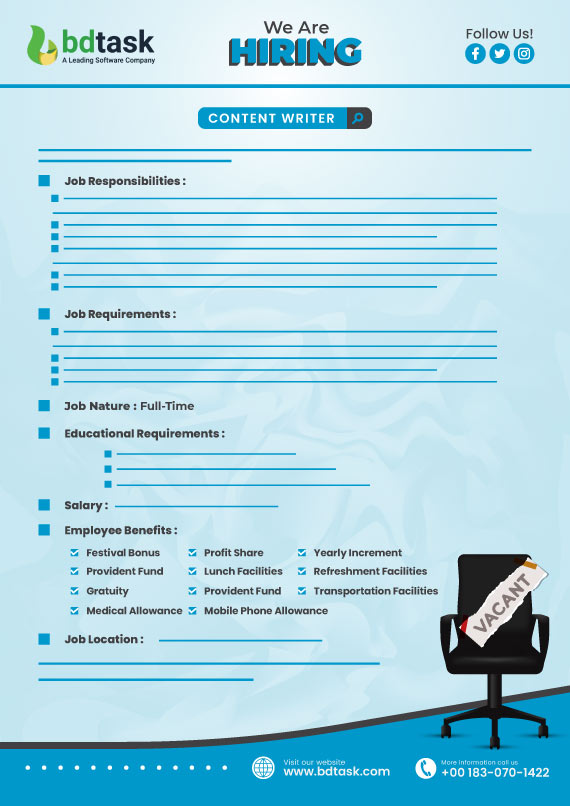
Why Is It So Essential To Have Employee Benefits in HRM?
(From Employee Perspective)
Of course, it's essential to have some employee benefits in every organisation because it mainly kicks a job holder's motivation scale. For instance, "employee benefits" make it easier & comfortable for the employees to survive in an environment or place where he/she would stay for at least 8 to 9 hrs without any family members.
Office premises should always be a happy & comfortable zone, so that employees can work with a fresh mind and whenever they feel stressed they can go to the refreshment room for relaxation. Organisations should always keep their operational work task or performance-based, not quantity based. As mentioned above, employee benefits in HRM aren't just financial facilities but also non-financial beneficiaries.
1. Feel More Valued, Respect & Involved
It kind of feels awesome when you get valued & respected in the workplace by your boss or team leader and, most importantly, get the chance to get involved in big projects. Every employee likes to get appreciated for his/her work and in exchange for a respected, handsome salary.
2. Boosted-Up Confidence
Due to the employee benefits in the HRM policy provided by the company, employees get a chance to relax and lead their personal lives without any unnecessary office pressure. Whenever any employee feels valued or gets respect for their work, even with the slightest contribution to the task, it literally raises the confidence to work with more dedication.
This kind of "work appreciation", "healthy behaviour", and "good working environment" naturally create a genuine motivation inside an employee's mind. Hence they naturally like to spend more time in the workplace.
3. Scope For Learning
One of the major parts of every job is to keep yourself up with the self-learning enthusiasm nature; the more you learn, the more you can improve in your career. But unfortunately, not every workplace or colleague comes out helpful or energetic for teaching.
Hence, it's kind of appreciable if the company organises any in-house training sessions for the employees. Training sessions are necessary for improving the employees' task quality, leadership skills, professionalism, time management, and strategic thinking, hence better productivity and performance.
4. Low Absenteeism
By providing different "employee benefits", organisations strategically hold an employee's mind and stay connected or involved in the organisation. And to do that, organisations need to put effort into employee engagement or offer wellness programs to reduce work- stress.
5. Advanced In Healthcare Policy
Healthcare facilities are one of the most common and general facilities which you will find in every organisation. Still, not all organisations will provide all types of medical services or insurance policies.
So, it's better to consider or work with those organisations that will appraise your situation and not put unnecessary workloads during those critical situations. Moreover, nowadays, organisations also arrange different welfare programs such as yoga classes, gym, physiotherapy and chiropractic sessions.
6. Profit Sharing Facilities
Not every organisation will include or provide "profit sharing" facilities to every employee; only the employees with the highest authority or directly involved with the project will get some percentage of the revenue.
The main purpose of providing such advantages is to appreciate and celebrate the hard work of that employee. Profit sharing is majorly attractive to every employee because it's very much work as motivation and loyalty towards the organisation, and helps to perform better in future.
7. Decision-Making Power
Generally, not everyone in the organisation gets the chance to be involved in the decision-making power. Involving in the decision-making of any project is a huge thing, which means your "opinion matters" to your boss and your company.
On the other hand, having such power in your hand helps an employee feel involved, resulting in more dedication towards the company.
8. Stable Career
A "Stable career" is what all employees want in their life. A stable career means an employee has got a comfort zone in that organisation, a source of permanent income, and a chance to work without the pressure of switching somewhere better.
An employee with a stable career is crucial because it subconsciously creates psychological trust, reliability, and dependency on the company. In the future, the company will take care of them.
Moreover, having a stable career helps to reduce the stress of unstable income sources, better concentration on projects, feel more satisfied & happy, and scope for skills development & learning.
9. Broader Space To Be Creative
Often employees feel shy and find it difficult to express themselves or their ideas. It's kind of companies' responsibility to provide a comfortable space so that anyone can express their ideas & creativity to colleagues or bosses.
Besides, getting such space from the organisation is like a blessing for employees because it helps them experiment in different areas, think outside the box, be more innovative, and generate revolutionary ideas. Employees tend to feel motivated and involved in tasks if they get the stage to share their ideas with the team.
Vice versa happens if any employee feels his/her is being neglected, making fun of the idea, or not getting the stage to share the plan. In this case, the probability of leaving the organisation and the percentage of absenteeism rises.
10. Performance-Based Increment
Performance-based increment totally depends on individual performance. It's one kind of reward from the organisation to employees who work hard and go beyond the duty call.
One of the disadvantages of gaining the chance of a performance-based increment is that most employees take too much work pressure just to win the chance of "performance of the month".
There Are 2 Types Of Performance-Based Increment:
- Merit pay increase: A raise in remuneration due to high performance, and to gain this raise, an employee has to go through an annual performance evaluation and project performance.
- Discretionary or variable pay increase: A raise in remuneration based on excellent performance or who have excelled in the company standard. Some examples of discretionary pay increases are:
- Project Bonus
- Loyalty Bonus
- Always Been There Bonus
- Attendance Bonus
On the other hand, providing such a kind of performance increment hugely raises the motivation bar of an employee. For instance:
- Employees started to be more productive
- Morally strong
- Establish as a “hard working” employee
- Less supervision of your work
- Decision-making power
- Potentiality to be a future Leader
Types Of Employee Benefit- Breakdown Of Every Types
Yes, not all organisations can afford to provide the allowance to every employee. Still, more or less, every organisation tries to provide different employee benefits in HRM just to hold the motivation to stay and be a promising employee of the organisation.
Workplace Flexibility: Allows employees to enjoy flexible working conditions, totally reliable, especially for task-based organisations.
- Flexible Pay (Hourly Based)
- Flexible Schedule
- Allow Home Office
Paid Holidays: The paid holidays, totally disparate from weekends, which an employee gets to enjoy, either allocated by the company or by the government.
- Paid Leave
- Annual Leaves
- Religious Leave
- Public Holidays
- Compensatory leave
Fringe Benefits: An employee will only enjoy these extra advantages if he/she is associated with the organisation.
- Employee Discount
- Mobile Allowance
- Own Expense Account
- Housing Facilities
- Vehicle Facilities
- Expense For Foreign Travel
Pension & Retirement Plans: The safety net advantage for every employee, allowing them to live life after ending their career.
- Immediate Annuity Plans
- Deferred Annuity
- Pension Plans with Life Cover
- Pension Plans without Life Cover
Healthcare leave: A good state of mind and physicality is absolutely necessary for every organisation. Healthcare leave is usually paid leave. A short break from work to take a rest mentally/physically and get back to work with full spirit.
- Sick Leave
- Bereavement Leave
- Maternity and Paternity Leave
- Sabbatical Leave
- Dental & Vision Coverage
- Life Insurance
- LGBT Healthcare
- Mental Health
- Child And Dependent Care
Wellness Program: The latest and trendiest types of wellness programs to avoid medical leave. Since the longer period of time an employee spends in the workplace, and it’s kind of necessary to show concern for their health too.
- Indoor Gym
- Indoor Canteen
- Lunch And Snacks Facilities
- Anger Management Class
- Stress Management Class
- Telemedicine Facilities
- Rehab Facilities
- Yoga Class
Employee Assistance Programs(EAP) - Do It Really Help To Reboot The Employees Spirits?
An employee assistance program (EAP) is a kind of employee welfare consultancy or counselling assistance program; that maintains strict confidentiality and is arranged by the organisation in exchange for zero fees.
Basically, employees who are facing difficulties in the workplace, personal life, financial, family issues, abusive trauma, psychological dilemma, and alcohol issues; participate in such kind of assistance program.
The main purpose of EAP is to help the organisation to prevent and tackle any type of devastating situation in the workplace or violence of law and regulation. In the case of providing service, EAP usually prefers phone, video calling counselling, e-mail interactions and face-to-face.
Based on the International Employee Assistance Professional Associate Program (EAPA), more than 95% of companies with a population of 5000 employees take the help of EAP, and 80% of the companies with a population of 1000 to 2500 employees use EAP.
Another source, Vision Counselling & Psychology, ran a first-handily counselling session on 1000+clients for 6 weeks and gathered some excellent results:
- 45% of the employee had brought a balance between professional & personal life
- 86% of the employee solved their personal problems
- 50% of the employees have developed a positive attitude
- 36% of regular absenteeism
- 27% improved employee engagement
- 24% of the employee improve in productivity
Here are some benefits to prove that EAP really does help to reboot the employees' spirits:
- Minimise the absenteeism rate
- Happy & positive work environment
- Reduce employee turnover
- Employees are no longer down in morale & confidence
- Increase their work speed
Do Employee Benefits in HRM Policy Really Improve Employee Performance?
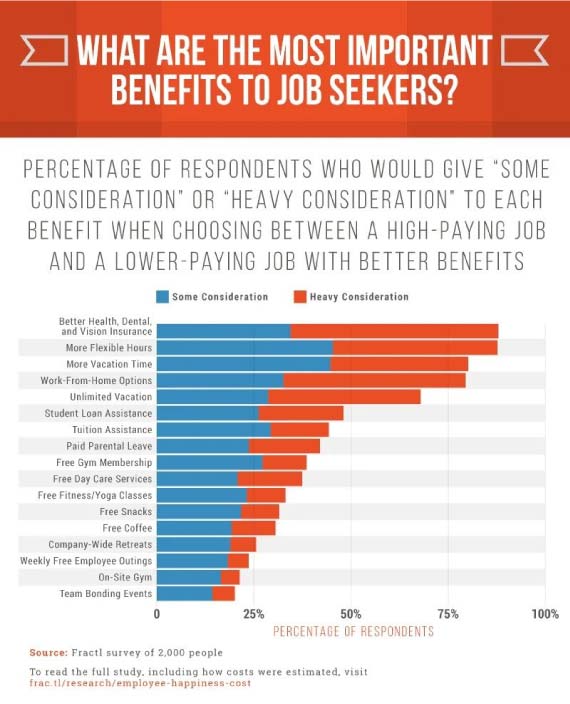
Indeed, employees are never happy nor satisfied only with salary; they must need employees' benefits to survive because it makes it easier to spend 9 hrs inside the office premises with colleagues and not feel suffocated.
Additionally, a source of employee benefits showed that 25% of employees believe that “employee benefits” provided by the organisation boost their work speed. Here are some following points on how employees benefits improve work performance:
- Self-motivation to work from the heart
- Improve productivity
- Starts to feel more valued
- More involvement in the work
- Job satisfaction brings a stable career
Want To Track Your Employees’ Performance?
HRM- Human Resource Management Software
HRM- full-fledged human resource management software, and is a proven assistant for every HR in the organisation. With HRM software, HR can handle & cope with different aspects of employees' benefits. Among the different pros and cons of HRM, HRM software is still the best mechanism for managing employees' tasks.
A Glimpse of Some Essential Features Of HRM:
- Set a benchmark for employee benefits
- Payroll management
- Assist in hiring & recruitment
- Talent management
- Employee training & development
- Track the employee attendance
- Evaluate the employee performance
- Organise the employee's leave
Ending Thought
Suppose you consider from an employee perspective how employee benefits in HRM are helping an employee to stay attached to the organisation and never give a second thought to switching. Employee benefits aid employees to survive for a longer term in the organisation and make it easy to blend in the work environment.
